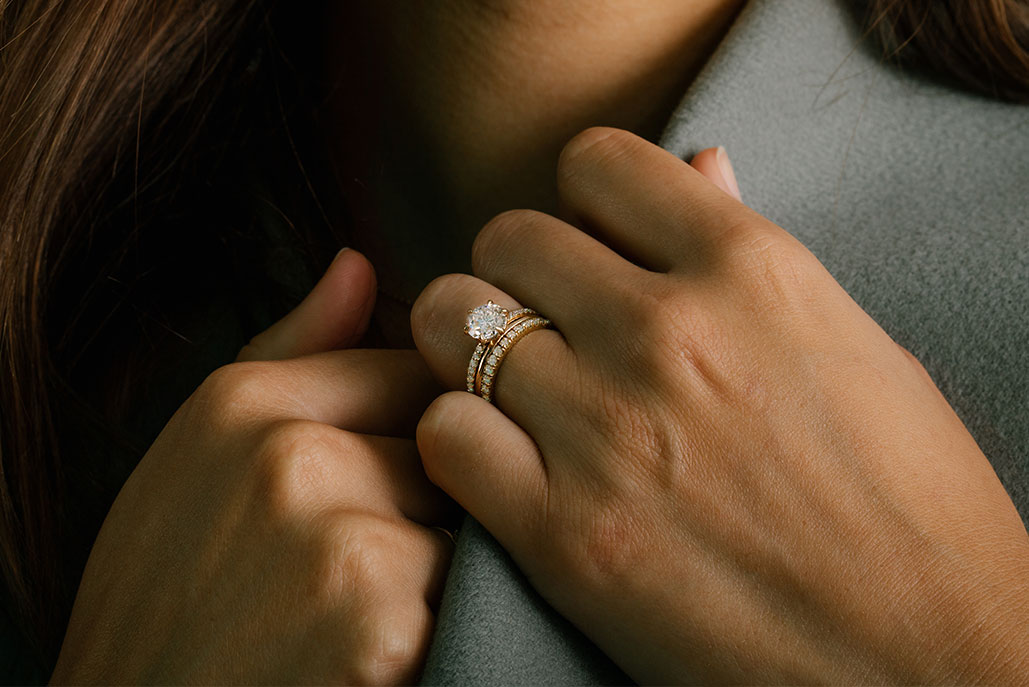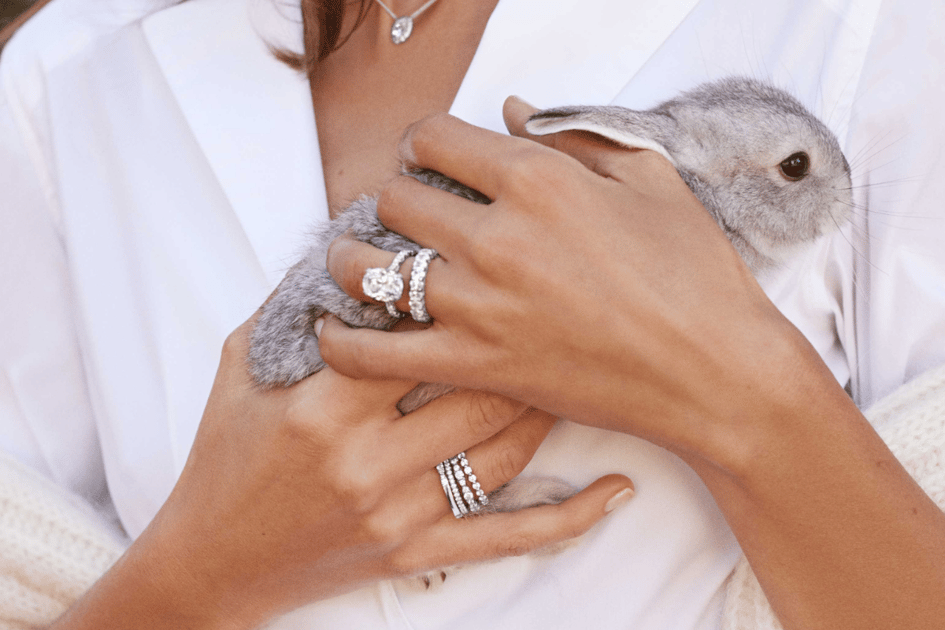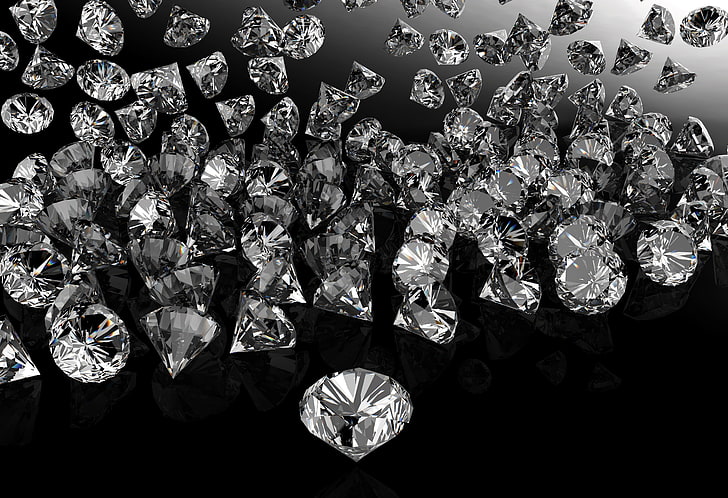Selecting the ideal diamond shape is a crucial decision in the world of fine jewelry. The shape, also known as the cut, influences not just the diamond’s overall appearance but also how it complements your style and preferences. From classic round brilliants to elegant ovals, each shape offers a unique allure and appeal. This guide will explore the various diamond shapes, highlighting their distinctive features to help you find the perfect cut for your engagement ring, wedding band, or any special piece of jewelry.
1. Round Brilliant Cut
Description: The round brilliant cut is the most popular and iconic diamond shape, renowned for its timeless elegance and superior sparkle. It features 58 facets, meticulously designed to maximize light reflection and brilliance.
Ideal For: Classic and traditional styles. Its versatility makes it a popular choice for engagement rings and suits nearly every type of jewelry setting.
Pros: Exceptional brilliance and sparkle; diamond shapes guide, widely available; complements a variety of settings.
Cons: Typically more expensive due to high demand and the amount of rough diamond wasted during cutting.
2. Princess Cut
Description: The princess cut is a modern and sophisticated shape characterized its square or rectangular outline with sharp, angular lines. It generally has 58 facets, though some variations may have fewer.
Ideal For: Contemporary and stylish designs. Its geometric appearance is popular for engagement rings and fashion pieces.
Pros: Offers brilliance similar to the round cut; makes efficient use of the rough diamond; modern and versatile.
Cons: The pointed corners may be prone to chipping; may have less sparkle compared to the round brilliant cut.
3. Emerald Cut
Description: The emerald cut features a rectangular shape with cropped corners and a step-cut facet arrangement. Its elongated lines emphasize clarity rather than brilliance, offering a sophisticated and elegant look.
Ideal For: Vintage and sophisticated styles. It highlights the diamond’s clarity and creates a strikingly elegant appearance.
Pros: Highlights clarity; creates the illusion of a larger stone due to its elongated shape.
Cons: Less sparkle compared to round or princess cuts; inclusions are more visible due to its clarity-focused design.
4. Asscher Cut
Description: The Asscher cut is similar to the emerald cut but with a square shape and a more pronounced step-cut facet arrangement. Developed in the early 20th century, lab diamonds, it has a vintage and unique appeal.
Ideal For: Art Deco and vintage-inspired designs. Its classic look offers a timeless charm.
Pros: Elegant and vintage; highlights clarity; combines the sophistication of the emerald cut with a unique square shape.
Cons: Less sparkle compared to round cuts; inclusions can be more noticeable.
5. Oval Cut
Description: The oval cut is an
elongated round shape with rounded edges, combining the brilliance of the round cut with a unique, elongated form. It features 56 to 58 facets and can make the diamond appear larger than its carat weight.
Ideal For: Modern and elegant styles. The oval shape is flattering for most fingers and offers a distinctive look.
Pros: Enhances the perceived size of the diamond; offers excellent brilliance and sparkle; unique and less common than the round cut.
Cons: May exhibit a “bow-tie” effect, a dark area in the center of the stone; requires careful setting to maintain symmetry.
6. Pear Cut
Description: The pear cut, also known as the teardrop shape, combines the round and marquise cuts to create an elongated diamond with a pointed end and a rounded end.
Ideal For: Romantic and feminine styles. It is often chosen for pendants, earrings, and engagement rings.
Pros: Offers a unique and elegant shape; can create the illusion of longer fingers; often features a beautiful sparkle.
Cons: The point can be prone to chipping; the shape may not be ideal for all types of settings.
7. Marquise Cut
Description: The marquise cut is an elongated, oval shape with pointed ends, designed to maximize the carat weight and create the illusion of a larger stone.
Ideal For: Dramatic and vintage styles. Its unique shape makes it a popular choice for engagement rings and statement pieces.
Pros: Maximizes carat weight and appearance of size; distinctive and elegant.
Cons: Can show inclusions more readily; the shape may not fit well with all types of settings; corners may be prone to damage.
8. Radiant Cut
Description: The radiant cut features a rectangular or square shape with cropped corners, combining the elegance of the emerald cut with the brilliance of the round cut. It typically has 70 or more facets.
Ideal For: Contemporary and glamorous styles. It offers a good balance between brilliance and shape.
Pros: Combines brilliance with a unique shape; can hide inclusions well due to its facet arrangement.
Cons: The shape may not appeal to those who prefer classic cuts; brilliance can vary depending on the cutting style.
9. Heart Cut
Description: The heart cut is a romantic and distinctive shape, featuring a heart outline with a cleft at the top. It is a variation of the round cut with a unique, recognizable form.
Ideal For: Romantic and personalized styles. It is a popular choice for engagement rings and anniversary gifts.
Pros: Offers a unique and sentimental shape; can be a standout piece in any jewelry collection.
Cons: Can be challenging to cut perfectly, making it less common; may have less brilliance compared to other shapes.
Conclusion
Choosing the right diamond shape is a personal decision that reflects your style, preferences, and the intended use of the jewelry. Each diamond shape has its own distinct characteristics and visual appeal, from the timeless brilliance of the round cut to the unique charm of the heart cut. By understanding the features and benefits of each shape, you can make an informed choice and find a diamond that perfectly suits your taste and enhances the beauty of your jewelry. Whether you’re selecting an engagement ring, a wedding band, or a special piece of jewelry, the right diamond shape will ensure your selection is both stunning and meaningful.



